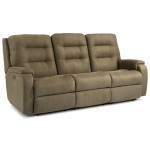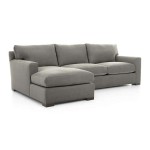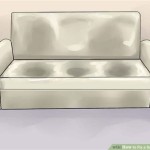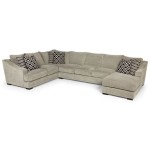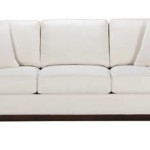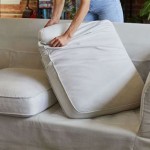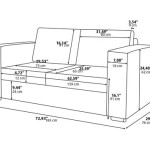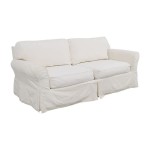How To Cover a Leather Sofa with Fabric
Covering a leather sofa with fabric offers a way to update its appearance, change the room's aesthetic, or protect the leather from wear and tear. This process requires careful planning and execution to achieve a smooth, professional-looking result. This guide outlines the necessary steps and considerations for successfully covering a leather sofa with fabric.
Assessment and Preparation: Begin by thoroughly assessing the sofa's condition. Note any existing damage to the leather, such as tears or deep scratches. Minor imperfections can often be addressed with patching or filler. Clean the leather thoroughly to remove dirt, oils, and dust. A clean surface ensures better adhesion for any necessary tapes or adhesives used during the covering process. Measure the sofa meticulously. Accurate measurements are crucial for determining the correct amount of fabric required.
Fabric Selection: Choosing the right fabric is essential. Consider factors like durability, texture, and color. Upholstery-weight fabrics are specifically designed to withstand the wear and tear of regular use. Tightly woven fabrics are generally more durable than loosely woven ones. The fabric's color and pattern should complement the room's existing decor. Purchase extra fabric to account for potential mistakes or pattern matching.
Gathering Necessary Supplies: Assemble all required tools and materials before beginning the project. Essential supplies include: upholstery-weight fabric, measuring tape, scissors, pins, sewing machine (optional), upholstery thread, seam ripper, staple gun, upholstery staples, pliers, tucking tool, and a fabric marker or chalk.
Pattern Creation (Optional): Creating a custom pattern ensures a precise fit. While using pre-existing slipcovers offers a simpler approach, a tailored pattern allows for greater control over the final look. Drape muslin or inexpensive fabric over the sofa sections, pinning and marking the fabric to follow the sofa’s contours. Transfer these markings onto paper to create a pattern for each section.
Cutting the Fabric: If using a pattern, lay it out on the chosen fabric, ensuring the pattern pieces are aligned with the fabric's grain. Use sharp scissors to cut the fabric accurately, leaving a seam allowance as indicated by the pattern or approximately 1 inch. If not using a pattern, drape the fabric directly onto the sofa and cut, allowing for ample excess fabric for adjustments.
Securing the Fabric: Begin by draping the cut fabric sections over the corresponding sofa sections. Pin the fabric in place, smoothing out any wrinkles or folds. Pay particular attention to corners and curves, ensuring the fabric lies flat against the leather. A tucking tool can be helpful for pushing fabric into crevices and seams. Once satisfied with the fit, begin stapling the fabric to the underside of the sofa frame, working from the center outwards. Use upholstery staples spaced approximately 2 inches apart. Ensure the fabric remains taut throughout the stapling process.
Finishing Touches: Once the fabric is securely stapled, trim any excess fabric. Fold under raw edges and secure them with staples or hand stitching for a clean finish. Address any visible staples by covering them with upholstery trim or fabric strips. Cushions can be covered using a similar method, creating separate covers or incorporating them into the overall sofa cover.
Addressing Challenges: Working with curves and complex shapes can be challenging. Take your time and make small adjustments as needed. Use clips instead of pins in areas where pins might damage the leather. If the leather is particularly slippery, consider using a non-slip fabric underlay to help secure the fabric.
Maintenance and Care: The care required for the fabric cover will depend on the chosen material. Regular vacuuming will help remove dust and debris. Spot cleaning can address spills and stains. Follow the fabric manufacturer's instructions for specific cleaning recommendations. Rotating cushions regularly will help maintain their shape and prevent uneven wear.
Alternative Approaches: Utilizing ready-made slipcovers offers a less labor-intensive option. While these may not provide as precise a fit as custom-made covers, they offer a convenient and often more affordable solution. Slipcovers also offer the advantage of being easily removable for cleaning or replacement.

Recover Your Sofa From Leather To Fabric Stunning Transformation And A Lot Er Than New Rescot Upholstery

Change A Bonded Leather Sofa To Fabric Rescot Upholstery

Hide Your Couch S Wear And Tear With These 9 Ingenious Ideas Hometalk

Hide Your Couch S Wear And Tear With These 9 Ingenious Ideas Hometalk
:max_bytes(150000):strip_icc()/2RobbRestyle-9da508c4528645d3908f39db224c4086.jpg?strip=all)
20 Diy Couch Cover Ideas For Any Budget
:max_bytes(150000):strip_icc()/9CraftingNook-499f3378b698461cb206f172f76a9286.jpg?strip=all)
20 Diy Couch Cover Ideas For Any Budget

How To Mix Leather And Fabric Furniture

We Are Considering Recovering Our Leather Sofa Cushions With Fabric This Is Perfect Minus The On Brown Comfy Chair

Advantages Of Leather Or Fabric Sofas

Diy Couch Makeovers 10 Creative Solutions For A Tired Sofa Bob Vila

